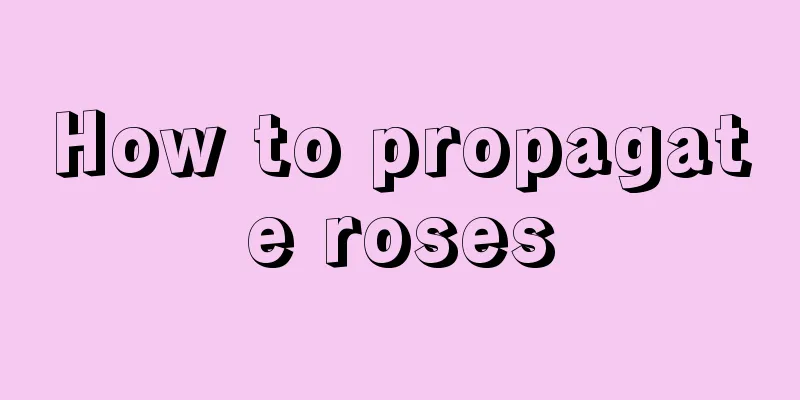Mealworm breeding and reproduction methods

|
Yellow mealworms , also known as mealworms, have larvae containing 60% crude protein, high nutritional value, and significant economic benefits from breeding. Here is an introduction to the breeding and reproduction methods of mealworms. 1. Breeding facilities Mealworm farming requires a suitable facility, which includes breeding boxes, sieves, waterers and food bowls. The breeding box is used to provide sufficient living space, the sieve is used to screen mealworms of different sizes, the waterer provides the mealworms with necessary water, and the food bowl is used to place food for the mealworms. 2. Suitable temperature The suitable temperature for the growth and development of mealworms is 15℃~35℃, and the optimum temperature is 26℃~32℃. Under suitable temperature conditions, the normal growth period of mealworm development shortens as the temperature rises. 3. Suitable humidity The suitable relative humidity of air for mealworms is 40% to 80%. The water required by mealworms is mainly obtained from feed. The moisture content of feed not only affects the absorption of water by mealworms, but also affects the effective utilization of nutrients. The moisture content of feed should not be too high and is generally controlled at around 20%. 4. Feeding Mealworms have a wide range of food sources. Wheat bran, cornmeal , bean cake, carrots , corn stalks, peanut stalks, peanut shells , vegetable leaves, mung bean skins, tofu dregs, melon and fruit peels, etc. are all raw materials for feeding mealworms. However, in order to produce mealworms as quickly as possible, you can prepare your own compound feed mainly based on wheat bran. The ratio is: 60% wheat bran, 10% corn flour, 10% peanut cake powder, and 20% various foods. It is beneficial to the growth and development of mealworms and saves feed. 5. Reproduction technology In order to promote the reproduction of mealworms, a suitable environment needs to be provided. This includes a steady food source, suitable temperature and humidity, adequate space, and good ventilation. In addition, it is necessary to regularly separate the hatched larvae and adults during the breeding process to ensure that they are not affected by the adults. The adults that emerge on the same day are reared in egg-laying sieves at a density of 7,000 to 8,000 per square meter, that is, 1,700 to 2,000 adults are placed on each sieve. Add compound feed for adult insects to eat. The moisture content of feed is controlled at around 10%. To maintain humidity and moisture content of feed, you can spray water and release vegetable leaves in an appropriate amount. The adult insects will lay most of their eggs on the egg-laying paper through the sieve holes, and only a small number of eggs will stick to the feed. This can prevent the adult insects from eating eggs to the greatest extent. Replace the egg-laying paper every 1 to 3 days, and sift out residual materials, insect feces and eggs stuck in the feed. Move the sieved eggs and the replaced egg-laying paper into an empty insect box and sprinkle a layer of new material. Mark the spawning date. After hatching, the adults are reared and laid eggs for one month, then the egg-laying is stopped. The adults are scalded to death with boiling water and dried to make insect powder. 6. Notes Both adults and larvae move by crawling and are very active. If the inner wall of the insect feeding box for artificially raising mealworms is rough, the larvae and adults will easily crawl out. Therefore, the inner wall of the insect feeding box should be as smooth as possible. Mealworms like to live in groups, which makes them easy to raise in high density. The best stocking density is about 2 kilograms of old larvae or adults per square meter, that is, 6,000 to 7,000 old larvae or adults. Mealworms are suitable for living in dark environments and do not need light. Therefore, mealworms can be raised in layers to make full use of space. During artificial breeding, mealworms are easily harmed by rats, geckos, ants, mosquitoes and mites, so be sure to pay attention. That’s it |
<<: Shrimp farming methods and techniques
>>: How to prune bougainvillea?
Recommend
Cultivation methods and maintenance matters of old Thousand Buddha Hands
How to grow Thousand Buddha Hands into an old pil...
Can I grow green radish at home?
1. Can I raise it? Of course it can be grown at h...
How to sow peach seeds
Peach seed sowing time The time for planting peac...
What are the varieties of durian?
1. Golden Pillow The fruit of the golden pillow i...
How to prune Mandarin Duck Jasmine
When to prune the jasmine Mandarin duck jasmine c...
How to propagate azaleas and how to achieve a high survival rate by cuttings
1. Breeding Methods 1. Sowing: Harvest the seeds ...
Cultivation methods and precautions of Tillandsia
1. Soil It is recommended to use loose, fertile, ...
How to propagate Pinguiclipa by cuttings
time The cutting propagation of Pinguecula is sui...
The efficacy and function of purple peony
The ornamental value of purple peony The purple-s...
How to grow Peucedanum chinense
1. Breeding environment 1. Soil: When cultivating...
Is the Chinese giant thorn suitable for indoor cultivation?
1. Is it suitable? The Amaryllis plant is suitabl...
What soil is best for Begonia
1. Nutrient soil Nutrient soil is more suitable f...
How to propagate gentian
Division method Reproduction time: Division propa...
How to grow fibrous roots of succulent plants
How to induce roots? 1. Disinfect the succulents ...
Will the scented vine die in winter?
1. Will I die? Whether it dies in winter depends ...









